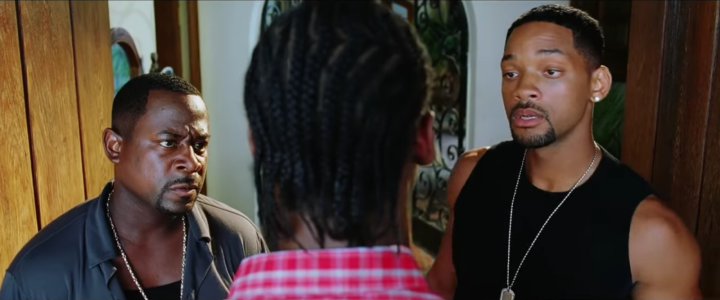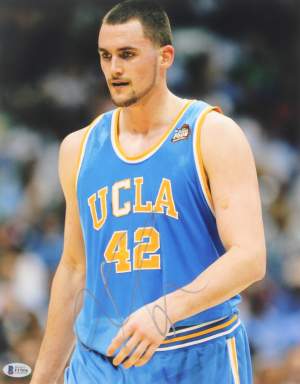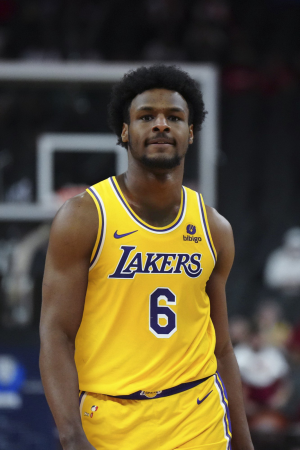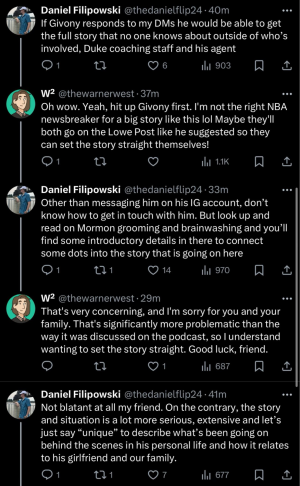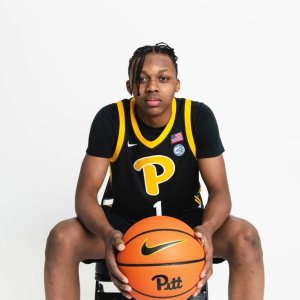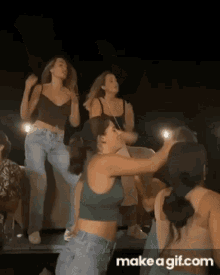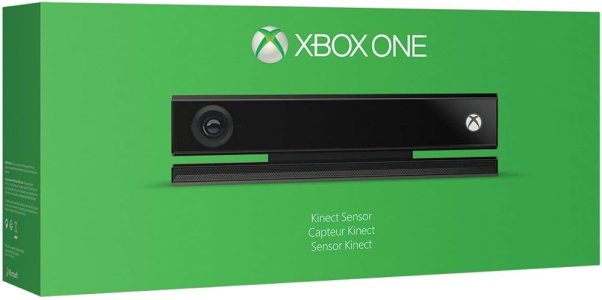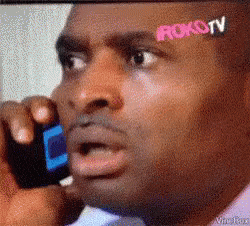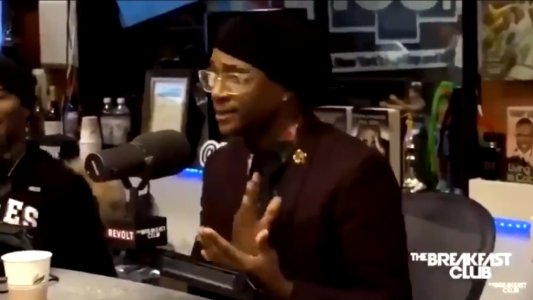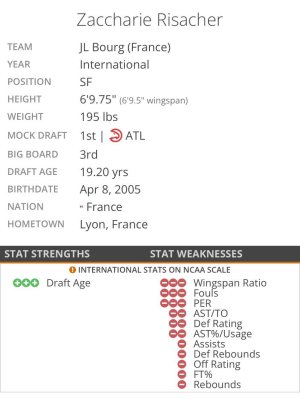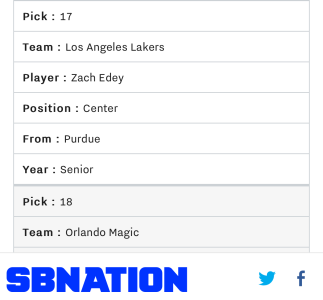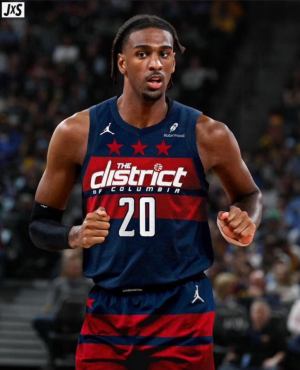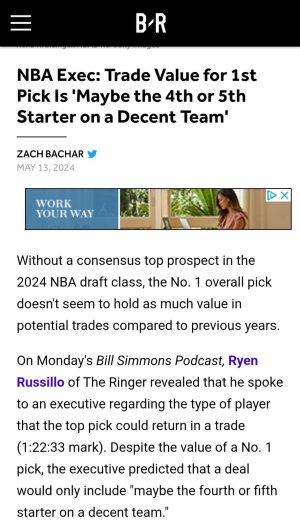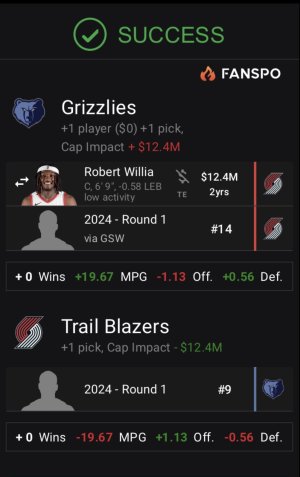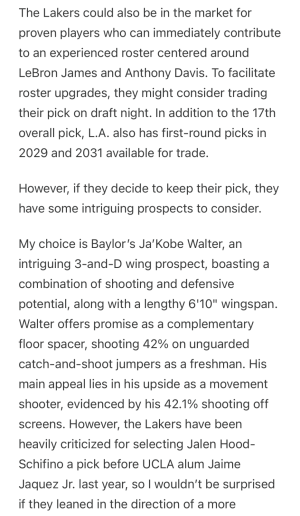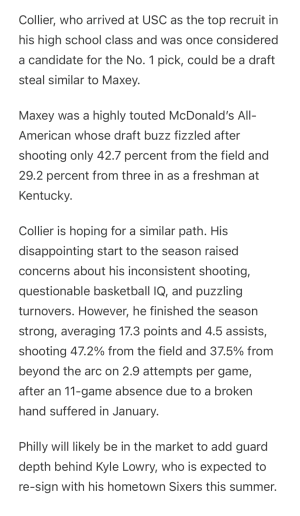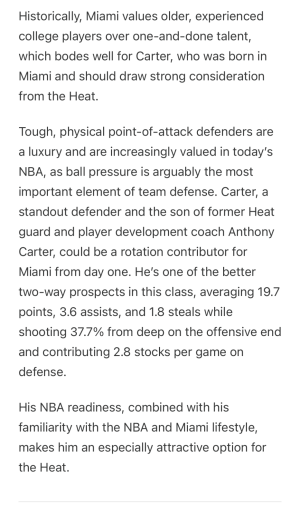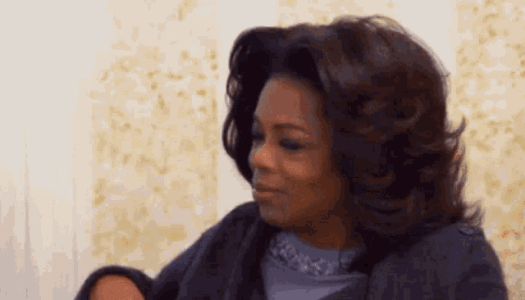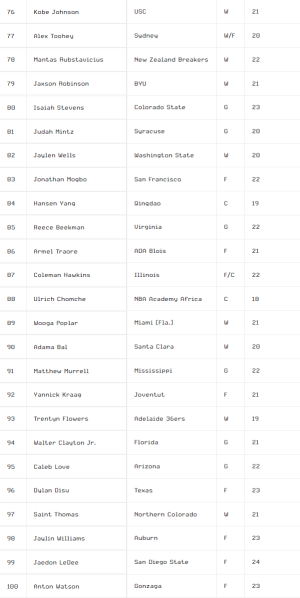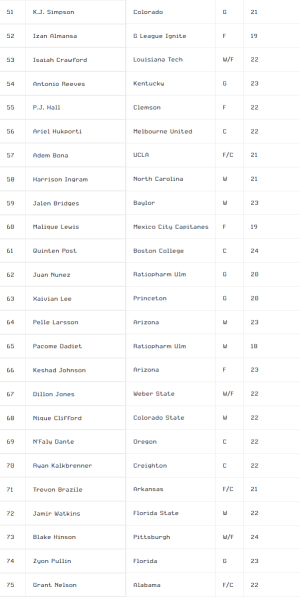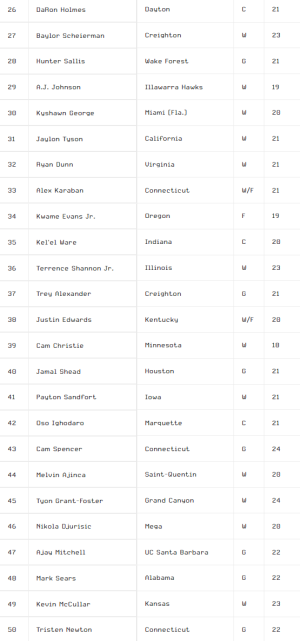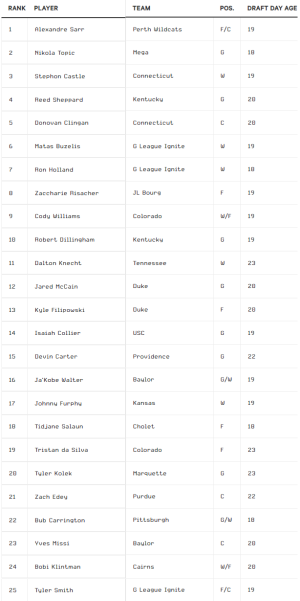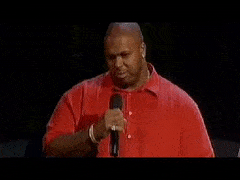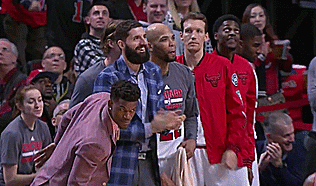2020 NBA Mock Draft: LaMelo Ball, James Wiseman and trade possibilities
When is being in an NBA front office just like being a fan? In a lot of ways, draft week is that time.
For starters, there’s a lot of newsgathering going on. Yes, we have access to better pipelines, but everybody is scanning the news for snippets of information and calling their best sources to try to figure what other teams are up to. With the pandemic situation, getting the good stuff is harder. As one league source told me, “I haven’t been through a draft before with this little information.”
More importantly, there’s the mock draft. Yes, NBA front offices do this. Every franchise does it a little differently, but the basic premise is the same: A group of staffers will go through the draft and try to divine who might get picked where, and who might slip. In some ways, it’s an easier exercise on the outside. The hardest part in a team environment is for the room to navigate around its own groupthink.
So, yes, it’s mock draft time. With eight days until draft time, I’ve been making calls, reading the Interwebs and searching for any other readable tea leaves to construct a plausible outcome for how this draft might go. I also hopefully have a bit more insight into how some of these teams think, having been dealing with them for the past several years.
From that, I’ve mapped out what I think happens with the first 30 picks.
But before we start, a few caveats:
It’s still early. This is the best information I have right now, but a lot can and will change over the next eight days. I can’t guarantee you how this board might change, only that it will. Rest assured that our assiduous crew here at The Athletic will keep you posted on everything we’re hearing.
Trades? There are a lot of spots in the first round that could potentially swap via a trade. However, until such a deal is actually consummated, it’s always safer to bet on a trade not happening and that the team in that particular spot ends up picking. Nonetheless, moves by Golden State or Boston, in particular, could end up shaking up this board; I’ll talk about that a bit more in their pick sections. But I’ve played out this mock draft “straight,” as though each team will be using its pick.
The second round? Ha. Let me tell you from seven years on the inside: Nobody knows what’s going to happen in the second round as it’s happening, much less beforehand. Sometimes picks change hands so quickly it’s hard to even keep track of who controls them. In seven years on the team side, I saw rumors about the second round pan out roughly zero times.
The uncertainty isn’t just because we don’t know which players will be left on the board — the bigger problem is that we don’t even know who’s picking. The fact is that in any given draft about half the second-round picks are likely to change hands. Last season it was 16 of them, including every pick from 32 to 35.
This year, nine of the first 10 picks in the second round have already been dealt at least once. Philadelphia alone has four second-round picks and there’s a decent chance the Sixers trade at least three of them. Mostly these deals happen via small-fry transactions involving cash or future seconds, but the big picture holds: Any projection of the second round is basically a blindfolded primate throwing darts.
Teams might be a little distracted. Free agency is going to start almost immediately after the draft, which means that teams will have to pivot very quickly into their other offseason moves. LOL, who are we kidding, free agency started last week. Teams and agents are already having discussions, not that they’ll admit it in their out-loud voice. Instead of the usual one-week interlude, the draft is taking place virtually simultaneously while this goes on.
Additionally, teams are hindered by the inability to complete any trades; they will end up having only a few days before the draft, and then less than 48 hours between the end of the draft and the start of free agency. All of which could chill the trade market a bit.
Not every team can trade down. Lots of teams in the lottery are looking to trade down. The problem is that with the possible exception of Boston, nobody seems particularly excited about trading up. It takes two to tango in this league, and a lot of teams are going to be alone on the dance floor. As a result, many teams will be making a pick even if their truth-serum honest preference is that they wouldn’t.
Point guards and centers pushed down. Two factors conspire against these positions. First, the recently completely playoffs reminded everyone how important it is to have switchable players, ideally between 6-5 and 6-9, in a postseason environment. Second, there are just too many of them, especially once we get past the lottery.
At point guard, I can point to several first-round talents who are between 6-0 and 6-2: Kira Lewis, Tyrell Terry, Cole Anthony, Malachi Flynn, Devon Dotson, Payton Pritchard, Tre Jones and Cassius Winston. I guarantee not all of them go in the first round. Maybe not even half of them. (Some would add Nico Mannion to this list, although I’ve heard his interviews were … not great.)
At center, it’s even worse, and driven even more by the fact that teams with two good centers already just aren’t going to draft a third one. Precious Achiuwa, Jalen Smith, Zeke Nnaji, Isaiah Stewart, Xavier Tillman, Udoka Azubuike and Daniel Oturu all are mid-to-late first-round talents, in the eyes of at least some evaluators. I’m not sure more than three of them actually go in the first round.
These aren’t my personal ratings. I published my draft board, including my top 23 players and my best of the rest (24 through 70), over the summer. That’s how I would rank these guys, and little has changed since then, given that nobody played any games for the last seven months.
This mock draft is different. What you’ll see below is what I expect teams might do, not what I would do in their shoes.
But I digress. With those asides, here’s how my crystal ball looks right now:
1. Minnesota – LaMelo Ball, PG, Illawarra Hawks
Minnesota continues to explore trade opportunities, in part because that’s how this front office is wired. But I’ve also heard some chatter that the Wolves are in win-now mode. To which I would retort a confused … why?
The Wolves aren’t making the playoffs this year with their current roster, and their two best players are at the beginning of long-term deals. Now is the time to assemble all the pieces that make you so good two years from now that Karl Towns and D’Angelo Russell aren’t looking for greener pastures; it is not the time to go all-in on the No. 8 seed and hope that Towns appreciates it three years from now. Why are you doing this, Wolves? WHY?
Anyway …
I’m fairly certain the first pick in the draft will be either LaMelo Ball or James Wiseman. Ball is the biggest talent, but Wiseman could end up No. 1 if the Wolves trade down with Charlotte. (One possible construction: The third pick, Miles Bridges and the 32nd pick for the first pick, Jacob Evans and Omari Spellman.) That would leave the Wolves in a position to gather some assets and select Anthony Edwards with the third pick, who fits better with the Russell-Towns pair than Ball does.
But I think that scenario is slightly unlikely, and if not, I think Minnesota — or whichever team picks here that isn’t Charlotte — takes Ball. He’s the most talented player and likely will have the most trade value. There are still warts here, relative to the top pick in most drafts: His jumper is shaky at best, he needs to dial up the defense, and from what I’ve heard his interviews were somewhere between mediocre and flat-out bad.
One other player to watch out for: Tyrese Haliburton. Minnesota isn’t taking him first, but I could see the Wolves going for him instead of Edwards if they trade down.
2. Golden State – James Wiseman, C, Memphis
This pick is turning into a circus, with the Warriors’ multiple smokescreens layered over what appears to be genuine internal debate about who should be the pick if they keep it.
We’ve heard a lot of fanciful trades involving Golden State and this pick, but let me offer a simpler one: What if they traded down from No. 2 to No. 4, sent Kevon Looney to Chicago for Wendell Carter, and picked Tyrese Haliburton? The Bulls could then pick LaMelo Ball second, if the first pick had already been James Wiseman via my Charlotte deal above.
The other name you hear a lot with the Warriors is Deni Avdija, although, again, that seems more of a trade-down possibility than something they would do at 2. One other wild card I can’t resist however: If Wiseman goes first, what about trading the second pick to New Orleans for Jrue Holiday, and then the Pelicans reuniting the brothers Ball?
Fake trades are fun! Nonetheless, at the end of the day I think they make the pick themselves and take Wiseman. Despite my own questions, enough other teams seem high on him that I feel pretty certain he goes in the top two. He helps the Warriors the most now, and has the most trade value later.
3. Charlotte – Anthony Edwards, SG, Georgia
The Hornets need a center, but they don’t need to draft a center. The Bugs have plentiful cap space and there are several quality 5s on the market this offseason.
Getting back to the draft and possible centers, it appears Charlotte is very excited about James Wiseman and maybe only somewhat excited about Onyeka Okongwu. If Wiseman is gone, that could leave the Hornets trading down or selecting Okongwu third, but they are just as talent-starved on the rest of the court and just need high-upside, All-Star caliber talent. Edwards is the one who fits the bill here.
As noted in the Minnesota section, I do see trading up as a possibility, but one has to wonder if that’s something that’s being goosed by the Wolves to drum up better trade possibilities from teams further down. Charlotte historically has been pretty careful about pushing chips in on draft day.
The wild card name here is Obi Toppin, who fits this team’s history of drafting highly productive college players. I think that’s more likely if they trade down, but keep it alive in your heads.
Finally, here’s the one piece of this puzzle that’s nagging at me: Teams aren’t sold on Edwards. They know he’s talented, but the shaky J, blah workout and some very iffy background reports make everybody nervous as hell. I can’t find anybody excited to pick him, and that makes me wonder if he could slip.
4. Chicago – Tyrese Haliburton, PG/SG, Iowa State
It’s like Gar Forman and Fred Hoiberg never left! Gags aside, I don’t know if Chicago is the team that takes Haliburton, but what I do know is that he’s going to go high. Everybody likes him. He has length and tools, the background on him is impeccable, and all these 1-on-0 shooting drills in “workouts” are going to make him look really good.
New GM Arturas Karnisovas had a track record of selecting international players in Denver, which has pushed some toward saying Deni Avdija could be the pick here, but there isn’t a lot of information backing that up besides foreign passports. The Bulls also are said to be looking at culture as a big piece of this, and Haliburton is the best culture guy with top-10 talent. I think he’s the pick here, and I think he might be the pick here even if it isn’t the Bulls making the pick.
One other player to watch: LaMelo Ball. Karnisovas and T’wolves GM Gersson Rosas worked together in Houston, and that could lubricate trade talks to bring assets to Minnesota and move the Bulls up in the draft. Unfortunately, I just don’t immediately see what Chicago assets could push a deal like this across the finish line.
5. Cleveland – Obi Toppin, PF, Dayton
I’ve heard two names with Cleveland: Obi Toppin and Deni Avdija. That’s it. That’s the list. I’m not really sure which way to run with this. Avdija has fans in the front office but I get conflicting thoughts on him from scouts I talk to: Some love him, some think he’s just okay. More people think Toppin is a pretty legit top-5 talent due to his offensive skill, but I’ve been told to keep an eye on his medicals from the combine. (Teams are still parsing through this info.)
Toppin is a weird fit in a frontcourt that already has Larry Nance, Andre Drummond and Kevin Love, but I could see the Cavs moving Nance and creating a role for Toppin (see Boston pick at 14 below). Cleveland might need to do the same with Avdija, actually, if you see his future as more of a 4 than a 3.
I have to wonder, however, if the Cavs might want to offset the recent history of more speculative grabs (Darius Garland, Collin Sexton, Kevin Porter) with a more experienced player, especially since they seem to be getting weary of the post-LeBron rebuild. Toppin’s ability to help immediately has to be tempting. That’s the tiebreaker for me.
6. Atlanta – Deni Avdija, SF/PF, Maccabi Tel Aviv
This pick is rumored to be in play, but I don’t really see an answer for Atlanta that is worth swapping out the sixth pick. I do think the Hawks would absolutely love to get their mitts on Tyrese Haliburton – he just checks too many boxes for them, short-term and long-term – but I think it’s unlikely they can do that from the sixth position.
If so, it might come down to Avdija or Devin Vassell. The argument for Vassell is more immediately persuasive, as a 3-and-D wing who could complement the Trae Young-John Collins-Clint Capela core.
The argument against is, “Didn’t we try this a year ago? How’d that work out?” The Hawks are likely better off aiming for the biggest talent in the draft and then using free agency to address getting rotation-caliber wing players. Avdija can also fill an important role as a backup 3/4 who may not start games but sometimes finishes them; if he’s any good at all he’ll be a massive upgrade on what they had a year ago.
The other name here is Isaac Okoro, but he’s the least likely of the group to provide immediate help for a team that’s jonesing for a playoff run this season.
7. Detroit – Patrick Williams, SF/PF, Florida State
The hottest draft rumor is that Williams has a promise from the Pistons, or at the very least that they’re extremely interested in him. Killian Hayes is the other name I’ve heard here, but at a much, much lower volume.
A Williams pick would track with everything we know about their front office. A year ago they took the youngest player in the draft, a long forward from France named Sekou Dombouya. Williams is the youngest collegian in this year’s draft.
Secondly, the Pistons seemingly had interest in Williams even before Troy Weaver became the GM. And then, as the capper, look at Weaver’s history in Oklahoma City: It’s one raw, long-limbed, combo forward after another. Williams could not fit more perfectly into that profile.
One thing to watch here: Could Detroit do a trade with Washington to move from 7 to 9, which would still get them Williams in all likelihood, but also brings in another asset? (From Washington’s perspective, this assures them of Onyeka Okongwu.) Weaver’s Oklahoma City team did a similar move a year ago, moving back two spots just before selecting Darius Bazley. If the Pistons are okay with Hayes as a Plan B, I could easily see this.
Finally, one name to watch if Detroit trades down: Aaron Nesmith.
8. New York – Tyrese Maxey, SG/PG, Kentucky
What is the Knicks-iest thing that can happen here? The first instinct is to say that the Knicks take CAA client Devin Vassell, given that the franchise is practically a subsidiary of CAA at this point, but it seems to me that those ties matter a lot more in free agency than they do in the draft. My best sources agree on this point. (Toppin and Haliburton also are CAA clients, by the way.)
So let’s look instead at the other connection point: Kentucky, where newly hired Knicks VP William Wesley has lurked in the shadows for the last decade, and from where newly hired assistant Kenny Payne also came.
After an ordinary college season, Maxey has seen his draft stock boost through no work of his own. The outsized exploits of former Kentucky players Devin Booker, Bam Adebayo, Jamal Murray and Tyler Herro in the bubble have generated renewed interest in Maxey’s prospects as the possible Next Kentucky Guy.
Fortunately for him, Kevin Knox, Malik Monk, Brandon Knight and James Young did not play in the bubble. I still don’t really see the fascination with Maxey, but it does appear he has a decent shot of going in the lottery.
The fly in the ointment is that Maxey signed with Klutch, and Klutch and CAA are bitter rivals. But with a rookie salary scale, there just isn’t a lot to haggle over. They’ll figure it out.
If LaMelo Ball slides, the Knicks are going to try hard to get in on the action, but I don’t think they have the goods to trade all the way up to number 1, and even if Ball is there at 2 it would probably cost them Mitchell Robinson at the very least.
One other possibility is for the Knicks to move back in a deal with Boston for picks 14, 26 and 30 … except they already pick 27th, so what are they really getting out of it unless they have a destination for one or two of those late firsts? I think they just use the pick here on whatever player they’ve rated highest. That player may very well be Maxey, although you also hear Killian Hayes’s name a lot here too.
9. Washington – Onyeka Okongwu, C, USC
The one thing I can almost guarantee in this draft is that Okongwu does not get past Washington at nine. The Wizards having a glaring need for a defensive center, and not a lot else on the shopping list with two veteran guards who will take up most of the backcourt minutes, and multiple young forwards they’re trying to get minutes. The question at this point isn’t even whether they’d take Okongwu; it’s who they would take if Okongwu is gone.
Should that happen, I think a swap with Boston for picks 14, 26, and 30 starts to make a lot of sense here. It gives the Wizards three shots at young talent to push the rebuild, and I’m not sure the player they get from 14 is really any different from the one they get at 9.
Should Okonwgu be gone and the Wizards have no viable trade outs, Isaac Okoro probably makes the most sense of the remaining players at this point since Washington needs literally anybody who can play defense. But mostly the Wizards are crossing their fingers that Okongwu gets to them.
10. Phoenix – Killian Hayes, PG/SG, Ratiopharm Ulm
The word is pretty strong out there that the Suns are targeting the backcourt with this pick, and that makes sense strategically given Ricky Rubio’s age and the fact Phoenix’s free-agent money will likely be spent on a power forward. So it comes down to Hayes or Kira Lewis. While some smoke signals indicate the Suns like Lewis better, Hayes has the advantage of being big enough to play next to guards like Rubio, Cam Payne and Jevon Carter. That’s a tougher sell with the slightly built Lewis. I could see Tyrese Maxey getting a look here too, if he’s still available.
Hayes is also a divisive player among scouts. Some compare him to Jamal Murray with his size and ability to get to different shots off the dribble, while others see him as a one-handed player with middling athleticism and a shaky shot. I’m a fan, but there’s no question the potential outcomes are all over the board with him.
11. San Antonio – Isaac Okoro, SG/SF, Auburn
Unusually large plumes of smoke have streamed out of San Antonio this fall, and this coming from a team that is normally church-mouse quiet. There are rumors that the Spurs are looking really hard at several bigs … and other rumors that they love Saddiq Bey … and overall just an absurd number of players projected 20 through 35 who have had their names come up here. Oh, and the Spurs are also rumored to love Patrick Williams, but he’s gonzo by this pick.
Tracing all that smoke back to an actual fire, one wonders if the Spurs are looking at trade-down scenarios with Boston that could put them in a position to have picks 14 and 26 if the player they want isn’t here at 11.
However, San Antonio’s scenario greatly simplifies itself if Okoro and Vassell are both on the board when they pick 11th. I don’t see the Spurs as a destination for Hayes or Kira Lewis given their backcourt crowd, but the rebuilding (please?) Spurs still need more wing talent. This is low for Okoro, perhaps, but he seems destined to slide a bit as a result of the 1-on-0 workout format, which didn’t showcase anything he does well but provided plenty of opportunity for him to display his offensive shortcomings.
12. Sacramento – Devin Vassell, SG, Florida State
There is a lot of chatter that analytics will play a major role in the Kings’ pick, which doesn’t shock me given the background of new GM Monte McNair. Hopefully, they use better inputs than whatever produced the legendary Nik Stauskas pick. However, note that The Matrix won’t be making this pick by itself: The new Sacramento front office does include some veteran road warriors, including former Sixers scout Phil Jabour.
Regardless, the analytics are unlikely to play so big a role that the Kings would take DePaul’s Paul Reed, who impresses with his digits but might very well still be available when they pick again at 42.
But if Vassell is available, this becomes an easy call, even with multiple shooting guards already on the roster (well, for now). I think this pick is Vassell’s floor. While it’s hard for teams in the lottery to get crazy excited over Vassell given his limited on-ball resume, the prospects of a plug-and-play 3-and-D wing for a team hoping to end its league-leading playoff drought have to be alluring. Also, of course, the analytics on Vassell are really good.
Worrying clips of Vassell launching Jamaal Wilkes-style from way behind his head were wisely scrubbed from Twitter, and sources insist that it was just him goofing around and not a real change in his form.
Finally, perhaps not surprisingly given how the last decade has gone, there have been rumors that some agents are specifically avoiding the Kings for workouts and interviews.
13. New Orleans – Kira Lewis, PG, Alabama
I don’t have a great read on the Pelicans right now, but Lewis will be the consensus top player on the board when this pick comes up, and he fits.
Why go with a point guard here when you already have Lonzo Ball? Because Ball is big and Lewis can shoot, meaning it’s pretty easy to play them together, and Lewis seems by far the best player available here … particularly if, as seems likely, New Orleans moves Jrue Holiday.
Jalen Smith is another name I’m hearing here, while one of Saddiq Bey or Aaron Nesmith could also be the choice given that the Pelicans are still a bit shy on floor spacing. But Lewis checks the most boxes.
14. Boston – Saddiq Bey, SF, Villanova
Bey might go 14th regardless of whether the Celtics keep the pick or not. My perception is that Bey and Nesmith are competing for the same type of draft slots and both will go in the teens, but that Bey is very slightly preferred to Nesmith by most of the “win-now” crowd.
From Boston’s perspective, Bey doesn’t ooze upside, but he provides a good shooter and switchable defender at the 3 and 4 to take over some of the backup wing minutes that had Brad Stevens desperately sifting through the Ojeleye-Langford-Williams pupu platter a season ago.
My favorite draft trade, by the way, is for Boston to flip this pick to Cleveland for Larry Nance, with the Cavs then taking either Bey or Nesmith in this slot. But as noted above, I can also see Boston packaging 14 and one of 26 or 30 to move up a few spots and get into Okoro/Vassell territory.
One other name to watch here: Aleksej Pokusevski. The Celtics could survive their roster crunch by leaving him in Greece and then bringing him over a year from now.
15. Orlando – Aaron Nesmith, SF, Vanderbilt
The history of this front office can be described in one word: Length. Since their days in Milwaukee, the team of Jeff Weltman and John Hammond has been obsessed with long limbs in the draft. Sometimes it gets them Giannis Antetokounmpo, and other times it gets them Melvin Frazier, but the track record here is really consistent.
That has everyone’s eyes cast toward Jaden McDaniels, the lanky young forward from Washington. The one caveat here is that McDaniels’ arms aren’t technically that long, but otherwise he fits the mold of a raw, oversized combo forward who this front office has picked.
The other issue, though, is how many players like this can you really have? I mean, if you spent the last couple years adding Jonathan Isaac, Al-Farouq Aminu and Chuma Okeke to a team that already had Aaron Gordon, are you really going to add another dude like this? I kind of doubt it.
That’s why I say Nesmith is the pick here. Surprise — he has long arms! Nesmith measured a 6-10 wingspan on his 6-5 frame. But he’s also a fantastic shooter who can play both wing positions, and this Orlando team is just desperate for shooting and spacing.
One note: The Magic are almost certainly looking closely at the point guard market. Markelle Fultz is locked into a backcourt slot, but he’s big enough to guard 2s and it’s still an open question whether he can ever be a high-end starter on a good team. If Kira Lewis falls here, I have to think the Magic pounce.
16. Portland – R.J. Hampton, SG, New Zealand Breakers
I’ve heard some wild stuff here — I mean like, wild stuff — but I’m not sure how much of it to believe. So I’ll go with the known on Neil Olshey’s track record: if he’s not getting a high-skill guy in the lottery, he prefers to work with raw clay. Toolsy, teenage, high-school All-Americans, preferably, with shooting optional. Nassir Little a year ago, Anfernee Simons before that, Eric Bledsoe with the Clippers … he has a type.
Of the available players, I would say Hampton is the one who best fits the mold. Hampton isn’t ready, but the Blazers believe strongly in their player development program and don’t mind waiting on results. Of the players remaining on the board, he arguably has the greatest upside.
I can understand the other argument, that Portland should be in more of a win-now mode and try to add another wing shooter. It would be especially tempting if one of Aaron Nesmith or Saddiq Bey is on the board, but they’re gone in this mock.
Back to crazy town for a minute: One name I’ve heard here is prep-to-pro Jay Scrubb, who is on the same path Simons took. But surely the Blazers would be targeting him at 46, not at 16 …. right?
17. Minnesota – Precious Achiuwa, PF/C, Memphis
This pick, like most in the 15 to 21 range, is actively being shopped, but it’s not clear to me who the buyer would be or at what price.
So let’s presume for now that the T’wolves pick. I’ve seen some Jalen Smith talk here, but I don’t really see it – he’s too stiff defensively to play next to Towns. It almost feels a bit smokescreen-y.
Meanwhile, Achiuwa doesn’t fit the 3-point vibe that’s likely to be a big part of Minnesota’s future, but otherwise checks some necessary boxes as a multi-positional, switchable frontcourt defender. He can play smallball 5 when Towns is off the floor but stay on the court next to Towns, too, especially if his shot comes around.
18. Dallas – Aleksej Pokusevski, “power” forward, Olympiakos B
Okay, let’s talk about the biggest mystery meat of the draft, because there is a lot of subterfuge to process here.
The rumor is that Pokusevski has a promise from a team in the first round, and that’s why he bailed on the draft combine. Bigger picture, that may also be why he bailed on much of his 2019-20 season, depending on when the promise came.
Adding fuel to the fire are two data points: 1) Pokusevski’s agent, Jason Ranne, used to work for the Oklahoma City Thunder, and 2) The Thunder themselves are notorious in league circles for promising their pick and having him shut down workouts and other public viewings waaaaay ahead of the draft.
I don’t think the Thunder are the only ones playing poker here, though. At the 18th pick, we have a Dallas team with a noted proclivity for swinging for the fences on high-upside international prospects. Sometimes they get Dirk Nowitzki and sometimes they get Pavel Podkolzin, but they’ll keep swinging.
So why wouldn’t the Mavs take a swing here? Instead, there are widespread rumors that Dallas is shopping the pick in search of a high-level wing.
Color me dubious. They’re going to trade this pick for a wing when they’re trying to create max cap room in 2021? They’d either nuke the cap space or end up trading a first-round pick for a rental. This feels more like a smokescreen to dissuade the teams behind them from jumping up to 17 and taking their guy.
I don’t see Pokusevski making it all the way to the Thunder at 25 in either case, which means Oklahoma City may need to use its surfeit of future firsts to move up. Regardless of which team lands Pokusevski, I think he goes in the mid-to-late teens, possibly as high as 14 to Boston.
19. Brooklyn – Tyrell Terry, PG, Stanford
The perception among draftniks is that Tyrell Terry has jumped Cole Anthony in the point guard pecking order. A certifiable Really Big Deal has been made of the fact that Terry put on 15 pounds of muscle since the end of the college season, but I must inform you that most NBA teams don’t really give a hoot – they know their own strength programs can fill out players like Terry.
Of far more relevance is that Terry measured an inch taller than his listed height because you can’t really fix that in the weight room. The added inch increases the long-term possibility of him being able to play off the ball next to a dynamic dribbler … like, say, Kyrie Irving.
Terry would be a perfect fit for Brooklyn. The Nets want upside with this pick, and get that with Terry’s youth and shooting ability. But he also fits as a back-end rotation player in their win-now incarnation centered on Kevin Durant and Irving. I’ve also heard Jaden McDaniels and Aleksej Pokusevski associated with Brooklyn.
While we’re here: Look for the Nets to buy a second-round pick that they can keep on the back end of the roster at the rookie minimum as their 14th player. They could make the money back just on saved luxury tax payments.
20. Miami – Jalen Smith, PF/C, Maryland
Miami could use another big to develop for a year and then take over Kelly Olynyk’s soon-to-be-vacant rotation spot when he becomes a free agent in 2021. And the Heat will certainly want that player to have some shooting skill so he can play next to Jimmy Butler and Bam Adebayo. Smith isn’t super-nifty distributing from the elbow, but has a solid 3-point release, is a plus rebounder and protects the rim well enough to plausibly play backup 5 despite his narrow frame.
Tyler Bey is another name to watch here, as he fits the mold of hyper athlete the Heat have targeted at other times — he could basically become their next Derrick Jones Jr. But if Smith is here, I think that’s the pick that makes more sense.
21. Philadelphia – Cole Anthony, PG, North Carolina
Despite Daryl Morey’s analytics renown, his draft history doesn’t really reveal a “type.” But I know what the Sixers need, and that helps winnow down the possibilities. I’m guessing it won’t be any of the 800 centers and non-shooters that will be on “next best available” lists when this pick comes up.
Anthony’s stock is definitely sinking, but at this point in the draft it might be an overreaction. He can create shots and is a pretty decent shooter from distance, two things that are in extremely short supply in Philly. The Sixers are in win-now mode, and Anthony might be able to give them bench scoring immediately. Also, analytics models that weigh AAU production would likely show Anthony as undervalued at this point.
This pick is also very much for sale if it returns the right player, but even if it moves I could see another team grabbing the value proposition on Anthony at 21.
22. Denver – Theo Maledon, SG, ASVEL Lyon
This pick would be entirely consistent with everything we know about the Nuggets. Denver loves its internationals, especially ones with decent tools who can spend a year or two blossoming in the Nuggets’ player development system. Denver also needs more guard help if you’re looking a year or two down the road, especially if Monte Morris doesn’t stay when he hits free agency.
Maledon’s own trajectory also indicates a likely promise, as he hasn’t suited up for Lyon this year under the presumption that he’ll be playing in the NBA soon. Scouts are torn on him, with few in love but most acknowledging a toolset that would make him at least functional on an NBA floor.
The other possibility here is one of the myriad centers on the board, as the Nuggets might want to get their replacement for Mason Plumlee on draft night. Zeke Nnaji, Elijah Stewart or Daniel Oturu could be an answer here.
23. Utah – Josh Green, SG, Arizona
The Green drumbeat from Utah has been pretty loud, and one can see why a big guard who can defend and has playmaking capability might be a pretty attractive idea for a team like the Jazz.
Green’s background wasn’t totally clean but not anywhere near red flag territory either, and starting in the late teens a lot of teams are looking closely at him. He has size at 6-6, pretty good feet at the defensive end, and his shot isn’t broken. Once again, the big picture for draft night is that midsize players have a wind at their back while the point guards and centers swim against the tide.
Utah also has the same group of centers noted above as possibilities here, and nobody would be surprised if they went for Desmond Bane either (more on him below).
24. Milwaukee – Desmond Bane, SG, TCU
I keep having people tell me that Desmond Bane will move up, that he had the best interviews of any player in the draft and he knows exactly what he is as a player. I’m buying it, and I may still have him too low here – I think this is closer to Bane’s floor than his ceiling. It’s easy to see him plugging into a role on a good team since he can shoot and pass and is willing to defend, even if his feet can be heavy at times.
He’d be a nice get here for Milwaukee, as the Bucks are set to lose as many as four wing players to free agency and would like to pipeline a younger wing on a rookie deal to offset the bleeding while they straddle with the luxury tax line.
25. Oklahoma City – Jaden McDaniels, SF/PF, Washington
A long-limbed, rangy combo forward with tempting athleticism but barely a trace of offensive skill? This type of player is a veritable honey trap for the Thunder, and my guess is that they can’t help themselves.
While similar moves have periodically paid off, there are a lot of questions about McDaniels. His attitude, skill level and general interest in basketball have all been called into question at various times. Go through each team’s draft board (if we could), and he would probably have the widest range of high to low of any player here. I had one exec tell me he was a top-5 pick, and others tell me he has no chance.
As noted above, the Thunder are widely suspected of having promised Aleksej Pokusevski, as noted above, but it seems unlikely he makes it to pick 25.
26. Boston – Leandro Bolmaro, SF, FC Barcelona
I suspect Boston would absolutely love it if Desmond Bane fell here, but the odds don’t favor that outcome. One can also make a case for Robert Woodard here since Boston has over-indexed on muscles in recent drafts and Woodard has a big, strong frame, but I don’t really see Woodard as a first-round talent and most of the people I talked to agree.
A lot of scouts aren’t crazy about Bolmaro, but he’s the one guy you can see being selected as a stash pick in the first round — Bolmaro is playing games for Barcelona right now and will be there all season, at a minimum.
In this case, he makes a ton of sense if Boston can’t move the pick, given the Celtics’ roster crunch and the fact they have three first-round picks. Bolmaro plays a valuable position and has some intriguing possibilities as a point forward who can guard his position, but his overall production has been pretty disappointing for FC Barcelona this year.
27. New York – Malachi Flynn, PG, San Diego State
I’ve heard a lot of Flynn chatter here. New York needs guard help, plus Flynn is a CAA client, so that automatically ties him to the Knicks. And he’s good! (Incidentally, one rumor making the rounds is that a couple of other teams are pursuing late first-round picks to grab Flynn, although this may be hot air since it includes some teams that quite honestly have near-zero capital with which to acquire a first-round pick.)
New York’s other options here are probably also guards, such as Jones, Pritchard, Winston or Dotson.
28. L.A. Lakers – Isaiah Stewart, C, Washington
I’m very interested in this pick given the Lakers’ scintillating recent track record with late draft picks, particularly regarding frontcourt players. In this case, they will have a ton of options if they want to grab a young 5 to back up their aging cohort of bigs.
Stewart is a bit undersized but has very long arms and probably came second only to Bane in terms of interview raves – everyone loves him. On the heels of previous L.A. finds like Thomas Bryant, Ivica Zubac and Mo Wagner, Stewart could provide another value frontcourt pick before the Lakers give him away for a ham sandwich in 18 months (ducks).
29. Toronto – Zeke Nnaji, C, Arizona
Toronto’s draft history is all over the place, with the one commonality being that the picks tend to turn out awfully well. In this case, the Raptors have two free-agent centers and are fairly stacked along the wings. Several point guards could go here too, but Toronto’s backcourt is full if Fred VanVleet returns.
Enter Nnaji. He gives them a big man who shoots well enough to space the floor for Giannis Antetokounmpo Pascal Siakam and Norman Powell, while also offering some board muscle. His defensive ability at the next level is a concern, but this is what you get at 29.
30. Boston – Tyler Bey, SF, Colorado
I don’t have a great landing spot for Bey, but this dude is too athletic not to go in the first round. I’m parking him here for now, on the expectation that Boston trades this pick someplace else and the acquiring team is more likely than not to see Bey as the best player available.
Some other names to watch here, and at the back end of the first round in general, are Jordan Nwora, Daniel Oturu, Payton Pritchard and Xavier Tillman. Devon Dotson and Paul Reed, despite my admiration for both, are far more likely to go later in the draft, as is another sleeper of mine in Elijah Hughes.






